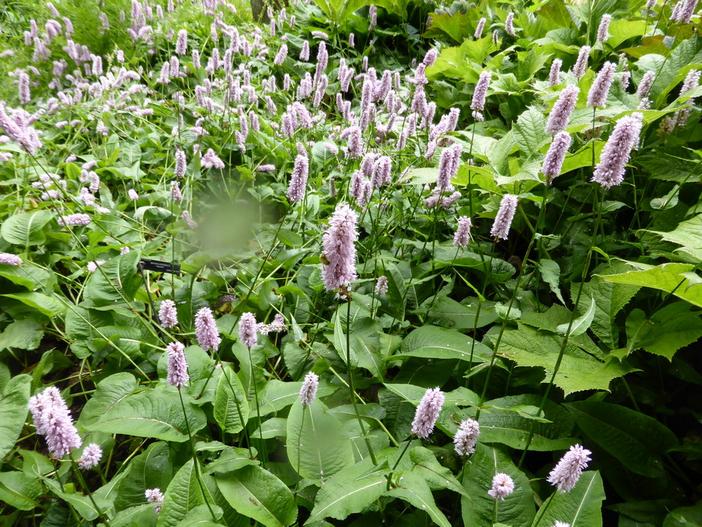Common Bistort
(Bistorta officinalis)
Common Bistort (Bistorta officinalis)
/
/

Wendy Cutler
CC BY-SA 2.0
Image By:
Wendy Cutler
Recorded By:
Copyright:
CC BY-SA 2.0
Copyright Notice:
Photo by: Wendy Cutler | License Type: CC BY-SA 2.0 | License URL: https://creativecommons.org/licenses/by-sa/2.0/ | Uploader: wlcutler | Publisher: Flickr


































Estimated Native Range
Summary
Bistorta officinalis, commonly known as Common Bistort, Snakeweed, European Bistort, or Adderwort, is a deciduous perennial herb native to damp habitats including meadows, riverbanks, and moist grasslands across Europe and northern and central Asia. It typically grows at a moderate rate to a height of 1.5-2.5 feet (0.46-0.8 meters) and a width of 1-1.5 feet (0.3-0.5 meters). The plant features lance-shaped leaves and dense spikes of small, pink flowers that are quite showy and bloom in the summer. The flowers are attractive to pollinators such as bees and butterflies.
Common Bistort is valued for its ornamental flowers and its ability to thrive in damp conditions, making it suitable for waterside plantings, rain gardens, and as a naturalizing plant in moist meadows. It is also used in traditional medicine and as a culinary herb in some regions. In cultivation, it prefers full sun to part shade and grows best in medium draining loam or clay soils, with consistent moisture. While it is not particularly drought-tolerant, it can withstand occasional flooding. Gardeners should be aware that Bistorta officinalis can spread vigorously by rhizomes, potentially becoming invasive outside its native range. It is advisable to check local regulations and consider containment strategies if necessary.CC BY-SA 4.0
Common Bistort is valued for its ornamental flowers and its ability to thrive in damp conditions, making it suitable for waterside plantings, rain gardens, and as a naturalizing plant in moist meadows. It is also used in traditional medicine and as a culinary herb in some regions. In cultivation, it prefers full sun to part shade and grows best in medium draining loam or clay soils, with consistent moisture. While it is not particularly drought-tolerant, it can withstand occasional flooding. Gardeners should be aware that Bistorta officinalis can spread vigorously by rhizomes, potentially becoming invasive outside its native range. It is advisable to check local regulations and consider containment strategies if necessary.CC BY-SA 4.0
Plant Description
- Plant Type: Herb
- Height: 1.5-2.5 feet
- Width: 1-1.5 feet
- Growth Rate: Moderate
- Flower Color: Pink
- Flowering Season: Summer
- Leaf Retention: Deciduous
Growth Requirements
- Sun: Full Sun, Part Shade
- Water: Medium
- Drainage: Medium
Common Uses
Bee Garden, Butterfly Garden, Low Maintenance, Water Garden
Natural Habitat
Damp meadows, riverbanks, and moist grasslands across Europe and northern and central Asia
Other Names
Common Names: Snakeweed, European Bistort, Adderwort
Scientific Names: , Bistorta officinalis,
GBIF Accepted Name: